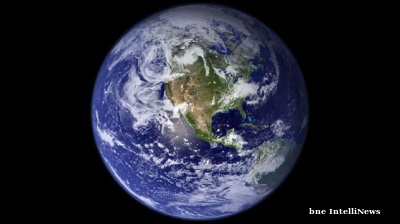Russia's winter grain crop is in unusually good shape with only 5.7% classed as in bad condition, lower than in recent years, according to Roman Nekrasov, an agriculture ministry official, Interfax reported on January 30.
The Russian winter has been unusually warm and dry this year, with Muscovites complaining there has been no snow at all.
Russian weather forecaster Hydrometcentre has reported 4% of the sowings in a bad condition, compared with 8% a year ago. In the southern North-Caucasus federal district, the situation requires special attention because more than 14% of the winter grain sowings there are not doing well, Nekrasov was quoted as saying, as cited by Reuters. He added that Russian farmers plan to sow spring grains on 29.2mn hectares this year, down 181,000 hectares from a year ago.
Russia has put in a series of good harvests in recent years after the state poured investment into the sector following the imposition of tit-for-tat sanctions on imports from the EU of agricultural products.
The harvest now regularly comes in at over 100mn tonnes and in 2017 Russia collected an all time record harvest of 135mn tonnes – besting even the Soviet-era record. The harvest last year was 123mn tonnes and Minister of Agriculture, Dmitry Patrushev, said an interview with Kommersant last month this year the harvest is expected to grow 2% y/y in 2019 in the sixth consecutive year of real advances.
Russia is battling it out with Ukraine for the title of “world’s biggest gain exporter, but narrowly lost the title last year when both counties exported circa 45mn tonnes of grain.
Grain exports have become a real moneymaker for Russia, which earned circa $20 last year.
Patrushev estimates that Russia will earn $24bn this year but the agriculture ministry's long-term plan to lift grain export earnings to $45bn by 2024 is on track, Patrushev said.
A good harvest also holds down inflation in Russia. The share of food in the average Russian shopping basket has crept up in recent years and is now about 50%, compared to 20%-30% in more developed countries. Russian inflation in recent years has beanery sensitive to food prices, so a big harvest reduces inflationary pressures significantly.
Inflation fell to post-Soviet record lows in 2018 of 2.3% but rose again to end that year at 5%, above the central bank's target rate of 4%. Partly thanks to another good harvest in 2019 inflation ended 2019 at 3% after falling rapidly in the autumn and may fall to 2.6% in the first half of this year say economists. Indeed, as the chart shows, food inflation was responsible for most of the fluctuations in the headline rate over the last four years.
The ministry also said in January that it might introduce export quotas to ensure sufficient supplies for the domestic market, not just enough grain for consumers but also supplies of feed for the flourishing animal husbandry sector. Patrushev highlighted that poultry, turkey and dairy products export volumes to China have been rising as that country starts to ease restrictions on agricultural imports. Pork production in particular has been rising to the point where Russia is almost entirely self sufficient and companies are beginning to export to more lucrative markets, whereas Russia was a net importer prior to the EU agro-sanctions.
Agriculture is also part of the 12 national projects being promoted by the Kremlin. The budget for developing rural areas is RUB2.3 trillion ($39.5bn) by 2025, with RUB1tn to be allocated from federal funds, Patrushev said.
“Expors volumes represent a core growth pillar for Russian agriculture, in our view. In MY20F, we see the grain harvest recovering 8% y/y to 122mnt [million metric tonnes], underpinning the sizable 42.7mnt export potential that is set to see an acceleration through the season. In poultry and pork, industrial production covers 84-89% of domestic demand, and greater foreign trade would be required for further capacity additions,” VTB Capital (VTBC) said in a note.
News

Malaysia plans social media ban for children under 13, following Singapore's lead
Under Kuala Lumpur’s proposal, all social media platforms will be required to implement mandatory identity verification systems to prevent underage users from creating accounts.

Following airstrikes, Pakistan and Afghanistan agree peace deal
In just the past few hours, Pakistan and Afghanistan have reportedly agreed to a temporary ceasefire following several days of cross-border clashes.

Turkey widens doorway to workers from Turkic-speaking countries
Move coincides with decision by Russia to kick out hundreds of thousands of largely Central Asian nationals.

Lawmakers of Turkey’s main opposition party urge Nato nations to sharpen focus on threats posed by Iran
Report presented to annual session of defence bloc's parliamentary assembly.
_1760544574.jpg)

